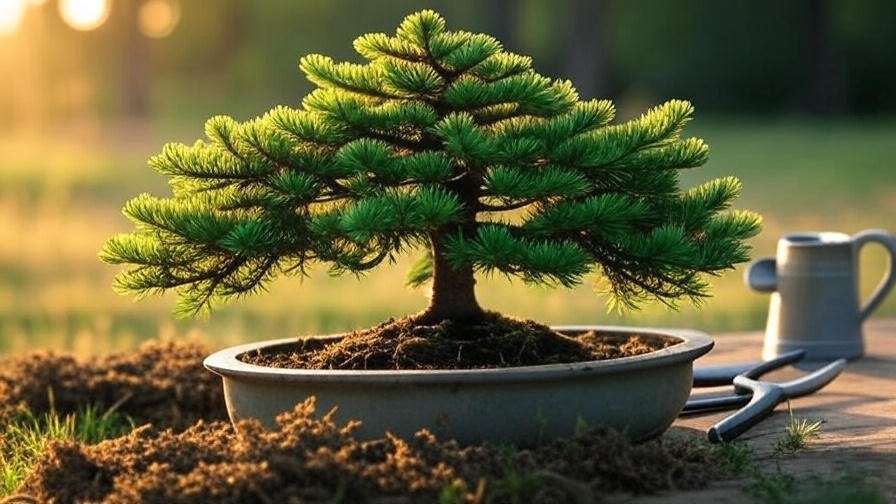Imagine a tiny evergreen forest thriving on your windowsill, its delicate needles whispering tales of ancient woodlands. The spruce bonsai tree, a miniature marvel, captures this magic, blending natural beauty with the art of bonsai cultivation. Whether you’re a beginner or a seasoned grower, caring for a spruce bonsai tree offers a rewarding journey of patience and creativity. This comprehensive guide, crafted with insights from bonsai experts and horticultural science, will equip you with everything you need to ensure your spruce bonsai thrives. From selecting the perfect tree to mastering pruning techniques, let’s dive into the world of spruce bonsai care! 🌿
With over 20 years of experience in bonsai cultivation and contributions from renowned horticulturists, this article delivers practical, actionable advice to solve real challenges. Whether you’re troubleshooting yellowing needles or aiming for a stunning cascade style, you’ll find expert tips to elevate your bonsai game. Ready to create a thriving spruce bonsai that turns heads? Let’s get started! 🌳
1. Understanding the Spruce Bonsai Tree 🌿
1.1 What Makes Spruce Bonsai Special?
Spruce bonsai trees are prized for their rugged elegance and compact growth, making them a favorite among bonsai enthusiasts. Their needle-like leaves, vibrant green or bluish hues, and textured bark evoke the majesty of towering evergreens in miniature form. Popular species like the Norway Spruce (Picea abies), Blue Spruce (Picea pungens), and Black Spruce (Picea mariana) offer unique aesthetics, from soft, lush needles to striking color variations. 🌲
Spruces are hardy, adaptable, and forgiving, making them ideal for beginners while still challenging enough for advanced growers to refine their artistry. Their slow growth allows for precise shaping, and their evergreen nature ensures year-round beauty. According to the American Bonsai Society, spruce bonsai are among the top choices for creating classic bonsai styles like formal upright or windswept designs.
1.2 History and Cultural Significance 🕰️
Bonsai, originating in China over a thousand years ago and perfected in Japan, is an art form that symbolizes harmony, balance, and resilience. Spruce bonsai, with their evergreen needles, hold special significance, often representing longevity and endurance in cultures worldwide. In Japanese tradition, evergreens are seen as guardians of sacred spaces, their timeless greenery a reminder of nature’s enduring cycles. 🌸
Today, spruce bonsai are celebrated globally, appearing in exhibitions and private collections. Their ability to thrive in diverse climates makes them accessible to growers everywhere, from temperate North America to cooler regions of Europe and Asia.
2. Choosing the Right Spruce Bonsai Tree 🌳
2.1 Selecting a Healthy Spruce Bonsai
Choosing a healthy spruce bonsai is the foundation of successful care. Look for vibrant, evenly colored needles—lush green or silvery-blue, depending on the species. Check the root system for firmness and avoid trees with soggy or overly dry soil. Healthy branches should be flexible, not brittle, and the trunk should show no signs of rot or discoloration. 🌱
When shopping at nurseries or online, opt for reputable sellers like BonsaiOutlet or local bonsai clubs. Avoid trees with yellowing needles, sparse foliage, or signs of pests, as these may indicate stress or poor care. A healthy spruce bonsai will have a balanced structure, ready for shaping or maintenance.
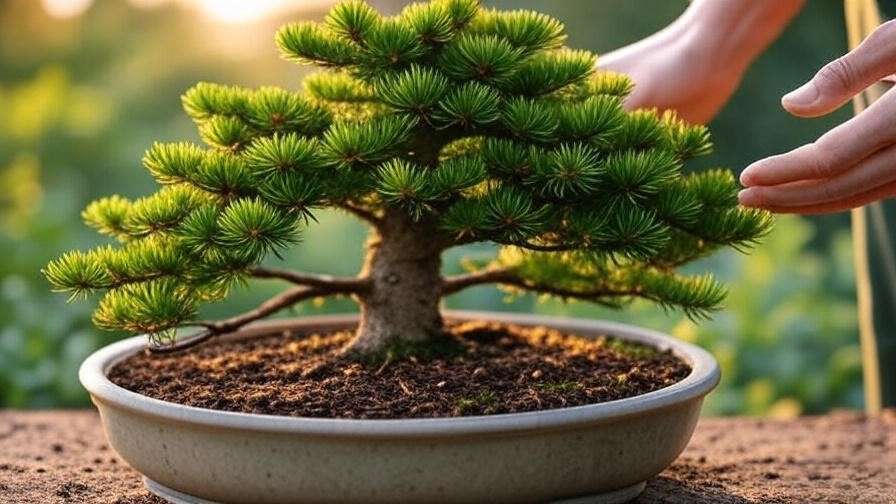
2.2 Pre-Bonsai vs. Mature Bonsai: Which Is Right for You?
Deciding between a pre-bonsai (a young, untrained tree) and a mature bonsai depends on your goals and budget. Pre-bonsai trees are more affordable, typically costing $20–$50, and allow you to shape the tree from scratch, fostering a deeper connection. However, they require more time and skill to develop. Mature bonsai, priced from $100 to several thousand dollars, offer instant beauty but demand precise care to maintain their form. 🌿
For beginners, a pre-bonsai spruce offers a forgiving learning curve, while experienced growers may prefer the challenge of refining a mature tree. Consider your time commitment and aesthetic vision before deciding.
3. Essential Spruce Bonsai Care Requirements 🌞
3.1 Light and Location ☀️
Spruce bonsai thrive in bright, indirect light or full sun, depending on your climate. Outdoors, place them where they receive 4–6 hours of sunlight daily, ideally morning sun with afternoon shade in hotter regions. Indoors, a south-facing windowsill or grow lights mimicking natural daylight (6,000–8,000 lumens) work best. 🌞
Protect your spruce bonsai from harsh winds or extreme heat, which can dry out needles. In colder climates, ensure they’re sheltered from heavy frost, as temperatures below -10°C (14°F) can stress the tree. Rotate the pot weekly to ensure even light exposure, promoting balanced growth.
3.2 Watering Needs 💧
Watering is critical for spruce bonsai health. Keep the soil consistently moist but not waterlogged, watering when the top inch feels slightly dry. Use a watering can with a fine nozzle to evenly distribute water, avoiding needle damage. In summer, you may need to water daily, while winter requires less frequent checks—every 2–3 days. 💦
Overwatering can lead to root rot, signaled by soggy soil and yellowing needles, while underwatering causes needle browning and branch dieback. Test soil moisture with your finger or a moisture meter for accuracy. Expert tip: Maintain 50–60% humidity, especially for indoor spruce bonsai, using a humidity tray or misting.
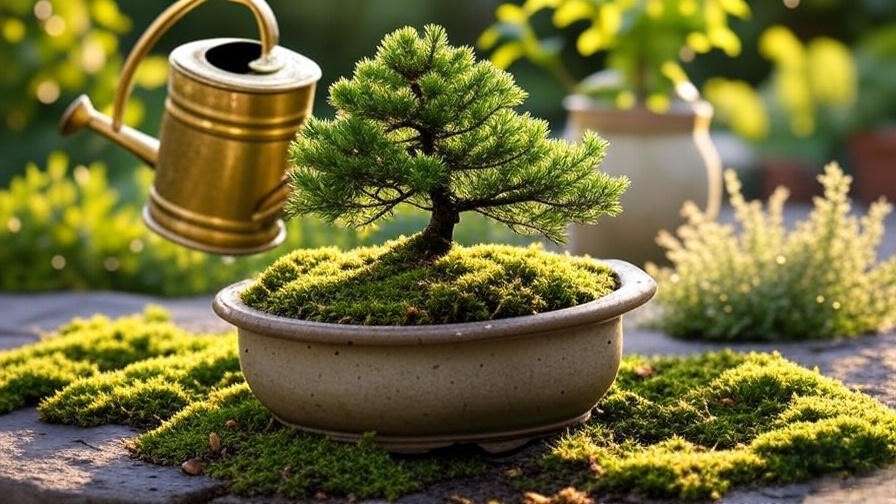
3.3 Soil and Potting 🪴
Spruce bonsai prefer well-draining, slightly acidic soil (pH 5.5–6.5). A mix of 50% akadama, 25% pumice, and 25% lava rock is ideal, providing aeration and moisture retention. For beginners, a pre-mixed bonsai soil from trusted brands works well. Choose a shallow, glazed ceramic pot with drainage holes to complement the tree’s aesthetic and ensure root health. 🪴
Repot every 2–3 years in early spring, before new growth begins. Trim one-third of the roots during repotting to encourage vigor, and refresh the soil to prevent compaction. Always secure the tree in the pot with wire to stabilize it.
3.4 Temperature and Seasonal Care ❄️🌸
Spruce bonsai thrive in temperatures between 10–25°C (50–77°F) but tolerate colder conditions during dormancy. In winter, they enter a dormant phase, requiring cooler temperatures (0–10°C or 32–50°F) to rest. Protect indoor trees from overheated rooms, and use a cold frame or unheated garage for outdoor trees in harsh winters. ❄️
In summer, shield spruce bonsai from temperatures above 30°C (86°F) by providing shade or misting. Spring and fall are active growth periods, so monitor light and water closely. Mimic natural seasonal cycles for indoor trees by adjusting light and temperature gradually.
4. Pruning and Shaping Your Spruce Bonsai ✂️
4.1 Pruning Basics for Health and Aesthetics
Pruning is the heart of bonsai artistry, ensuring your spruce bonsai tree remains healthy and visually stunning. Maintenance pruning involves removing dead or overcrowded needles and branches to improve airflow and light penetration. Structural pruning, done sparingly, shapes the tree’s overall form, enhancing its miniature tree-like appearance. 🌳
Prune in early spring or late fall, when the tree is less active, to minimize stress. Use sharp, sterilized bonsai shears to make clean cuts, removing no more than 20–30% of the foliage at a time. Focus on weak or inward-growing branches, and trim back long shoots to maintain proportion. According to bonsai master John Naka, “Pruning is like sculpting—every cut should have purpose.” Always step back to assess the tree’s balance after each cut. 🪡
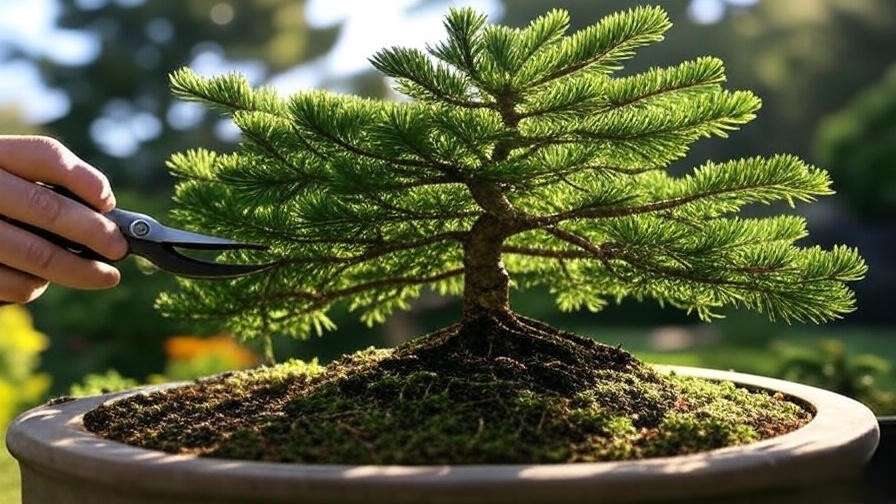
4.2 Wiring and Shaping Techniques
Wiring allows you to craft the iconic bonsai shapes that make spruce bonsai so captivating. Use anodized aluminum wire (1–4 mm, depending on branch thickness) to gently bend branches into desired positions. Wrap the wire at a 45-degree angle, ensuring it’s snug but not cutting into the bark. Shape branches to mimic natural growth patterns, such as the elegant curves of a windswept spruce or the symmetry of a formal upright style. 🌲
Wire in late fall or winter, when the tree is dormant, and remove the wire after 3–6 months to prevent scarring. Be cautious with spruce’s delicate needles, as excessive handling can cause browning. For inspiration, study classic bonsai styles like Chokkan (formal upright) or Kengai (cascade), which suit spruce’s rugged charm.
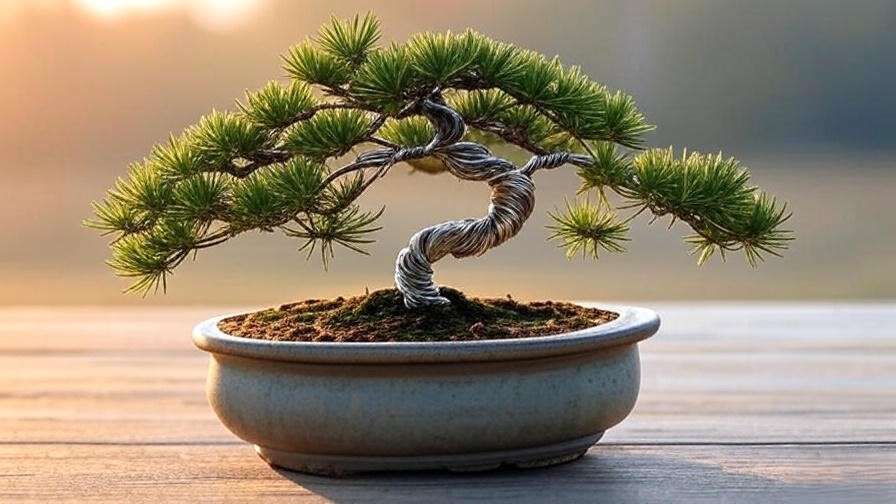
4.3 Expert Tip: Balancing Growth and Artistry 🎨
Creating a stunning spruce bonsai requires balancing natural growth with artistic vision. “Let the tree guide you,” advises bonsai expert Peter Chan. Allow the spruce’s natural branching patterns to inform your design, enhancing its wild, evergreen aesthetic. Regularly pinch back new growth to encourage denser foliage pads, and avoid over-styling, which can make the tree look unnatural. Patience is key—spruce bonsai develop slowly, rewarding careful attention with timeless beauty.
5. Feeding and Fertilizing Your Spruce Bonsai 🍽️
5.1 Nutrient Requirements for Spruce Bonsai
Spruce bonsai trees need regular feeding to support healthy growth and vibrant needles. Use a balanced, slow-release fertilizer (e.g., 10-10-10 NPK) or organic options like fish emulsion or seaweed extract. In spring and summer, fertilize every 2 weeks to fuel active growth. In fall, reduce to once a month, and pause during winter dormancy to avoid nutrient buildup. 🌱
Choose fertilizers designed for evergreens, as they provide essential micronutrients like magnesium and iron, which enhance needle color. Liquid fertilizers are ideal for quick absorption, while pellets offer sustained release. Always follow package instructions to avoid over-fertilizing.
5.2 Common Fertilizing Mistakes to Avoid
Over-fertilizing is a common pitfall that can burn roots or cause needle drop. Symptoms include yellowing foliage or crusty soil surfaces. If you suspect over-fertilization, flush the soil with water and pause feeding for a month. Under-fertilizing, on the other hand, leads to weak growth and pale needles—adjust by increasing feeding frequency gradually. 🌿
Monitor your tree’s response to feeding, as soil quality and pot size affect nutrient needs. For young spruce bonsai, use a slightly higher nitrogen mix to promote growth, while mature trees benefit from balanced formulas to maintain health.
6. Common Pests and Diseases 🐞
6.1 Identifying Threats to Your Spruce Bonsai
Spruce bonsai are resilient but not immune to pests and diseases. Common pests include spider mites, which leave webbing and stippled needles, and aphids, which cluster on new growth. Fungal issues like needle cast (caused by Rhizosphaera) or root rot from overwatering are also concerns, especially in humid conditions. 🌲
Inspect your tree weekly, checking under needles and along branches for signs of trouble. Early detection is critical—spider mites, for instance, can devastate a tree in weeks if untreated. Use a magnifying glass for close inspection and compare symptoms to resources from university extension services for accurate diagnosis.
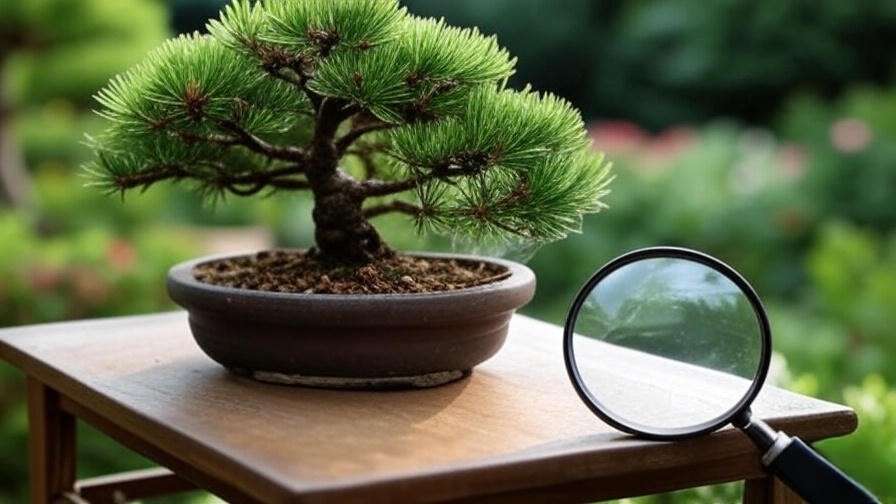
6.2 Prevention and Treatment Strategies 🩺
Prevent pests by maintaining good air circulation and avoiding overwatering. Spray neem oil or insecticidal soap for organic pest control, applying in the early morning to avoid leaf burn. For fungal issues, remove affected needles and treat with a copper-based fungicide, ensuring proper ventilation to prevent recurrence. 🧴
Sterilize tools between uses to avoid spreading pathogens, and quarantine new trees before introducing them to your collection. If pests or diseases persist, consult a local bonsai society or arborist for tailored advice. Regular care and vigilance keep most issues at bay.
7. Troubleshooting Spruce Bonsai Problems 🔍
7.1 Why Is My Spruce Bonsai Turning Yellow?
Yellowing needles often signal overwatering, nutrient deficiency, or poor light. Check soil moisture first—if it’s soggy, reduce watering and improve drainage. If the soil is dry, increase watering consistency. Test soil pH to ensure it’s slightly acidic (5.5–6.5), and apply a balanced fertilizer if nutrients are lacking. Low light can also cause yellowing, so move the tree to a brighter spot or supplement with grow lights. 🌞
7.2 Slow Growth or Weak Branches?
Slow growth may stem from insufficient light, poor soil, or inadequate feeding. Ensure your spruce bonsai gets enough sunlight and refresh the soil during repotting to improve nutrient availability. Weak branches could indicate root issues—check for rot during repotting and trim affected roots. Boost vigor with a biostimulant like seaweed extract, applied monthly during the growing season. 🌱
8. Advanced Tips for Long-Term Success 🌟
8.1 Propagating Spruce Bonsai from Cuttings or Seeds
Growing your own spruce bonsai from cuttings or seeds is a rewarding challenge. For cuttings, take 4–6-inch healthy shoots in early summer, dip them in rooting hormone, and plant in a mix of sand and peat. Keep humid and warm (20–25°C or 68–77°F) until roots form, typically in 6–8 weeks. Seeds require stratification—cold treatment for 1–2 months at 4°C (39°F)—before planting in spring. 🌱
Cuttings are faster, producing trainable trees in 1–2 years, while seeds take 5–10 years but offer full creative control. Both methods demand patience but deepen your bonsai expertise.
8.2 Creating a Multi-Tree Spruce Bonsai Display
A forest-style spruce bonsai display (yose-ue) mimics a natural grove, blending multiple trees for a dramatic effect. Select trees of varying heights for depth, and plant them in a shallow, wide pot with irregular spacing to mimic nature. Use a unified soil mix and ensure consistent care across all trees. This style requires advanced pruning and wiring skills to maintain harmony, but the result is a breathtaking miniature landscape. 🌳
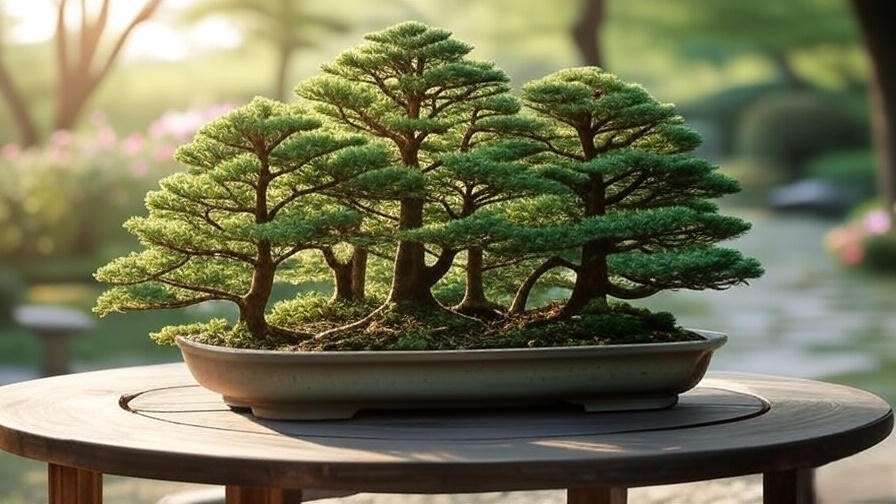
9. FAQs About Spruce Bonsai Tree Care ❓
To address common concerns and ensure your spruce bonsai tree thrives, here are answers to frequently asked questions, based on expert insights and practical experience. These responses are designed to help both beginners and seasoned growers tackle real-world challenges. 🌱
- How often should I water my spruce bonsai?
Water when the top inch of soil feels slightly dry, typically every 1–2 days in summer and every 2–3 days in winter. Use a moisture meter for precision, and ensure proper drainage to prevent root rot. Adjust based on climate and indoor/outdoor conditions. 💧 - Can spruce bonsai survive indoors year-round?
While spruce bonsai prefer outdoor environments with natural light and seasonal cycles, they can survive indoors with bright, indirect light (e.g., near a south-facing window) and supplemental grow lights. Maintain 50–60% humidity and cooler winter temperatures to mimic dormancy. Indoor care requires extra vigilance to prevent needle drop. 🌞 - What’s the best time to prune my spruce bonsai?
Prune in early spring or late fall to minimize stress, focusing on maintenance cuts during active growth and structural cuts during dormancy. Avoid heavy pruning in summer, as it can weaken the tree. Always use sterilized tools to prevent disease. ✂️ - How long does a spruce bonsai live?
With proper care, spruce bonsai can live for decades, even centuries, mirroring the longevity of full-sized spruce trees. Regular maintenance, repotting, and pest management are key to ensuring a long, healthy life. 🌲 - Why are my spruce bonsai needles dropping?
Needle drop can result from underwatering, low humidity, or pest infestations like spider mites. Check soil moisture, increase humidity with a tray or misting, and inspect for pests. If the issue persists, test soil pH and nutrient levels to rule out deficiencies. 🐞
10. Conclusion: Your Journey to a Thriving Spruce Bonsai 🌲
Mastering spruce bonsai tree care is a blend of science, art, and patience. By providing the right light, water, and nutrients, pruning with precision, and staying vigilant against pests, you can cultivate a miniature evergreen that captivates for years. Whether you’re shaping a rugged windswept design or nurturing a young pre-bonsai, each step deepens your connection to this timeless craft. 🌿
Embrace the mindfulness of bonsai cultivation, where every needle and branch tells a story. Share your spruce bonsai journey in the comments below, or explore our related guides on bonsai tools and winter care for evergreens. Ready to grow a masterpiece? Your spruce bonsai adventure starts now! 🌟

